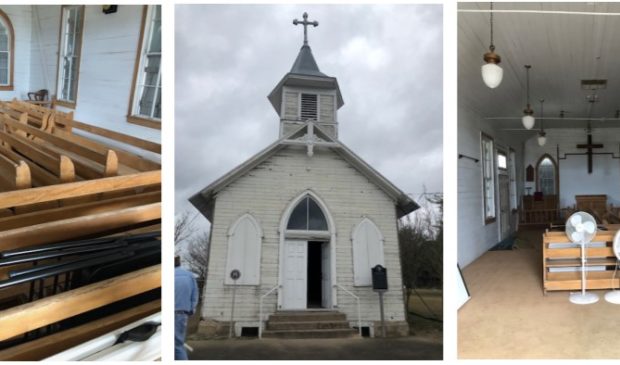Lutheran Church relocation case looks at the nature of historic status
Thursday, July 29, 2021 by
Sean Saldaña On Monday, the Historic Landmark Commission revisited a case that involves relocating the Dessau Lutheran Church, which was constructed in 1876, to Pioneer Farms, an outdoor museum dedicated to 19th-century Texas history.
The church, located at 13300 Dessau Road in North Austin, was one of the early centers of worship in the area and quickly became a pillar of the city’s German community.
Like many buildings from the era, its age comes with increasing maintenance costs that the Dessau Lutheran Cemetery Association cannot keep up with. As a result, the building has begun to deteriorate and vandalism has become a problem.
That’s why the association voted overwhelmingly in 2019 to relocate the building to Pioneer Farms, a move supported by the commission when it passed a resolution last February supporting the relocation. However, the resolution alone didn’t grant the applicants a certificate of appropriateness, which is why the case went before the commission again.
When the commissioners met this week, they reaffirmed their decision.
What makes this case noteworthy is how the commission is considering the historic status of the property. Historic landmarks for the city are categorized in terms of their location and a specific building. For the majority of cases, this classification system is pretty straightforward; most historic buildings are located on the original property they were built on. In a case like this, however, where the original building and the property are going to be separated, a question arises about what makes something historic: Is it the building itself, the land it’s placed on, or some combination of both?
The difficulty of this question is not lost on city staff. In documents prepared for the meeting, staffers acknowledged that “relocation will result in a loss of integrity of location and setting; it will sever the physical ties” to the original context the building was constructed in.
In this particular case, the commissioners are partially side-stepping some of the more philosophical questions about preservation and making their intentions clear: They want the building to maintain its historic status and are willing to be pragmatic to make that happen.
Both the commission and staff have come to the conclusion that while relocating the building does have a noteworthy impact on the nature of its historic status, the threat of deterioration at the existing site offsets “the loss of context through relocation.”
Coming to this conclusion creates some administrative legwork for the commission.
Elizabeth Brummett with the Historic Preservation Office confirmed with the commission, “We would like it to remain a landmark, so absolutely we will want to place historic zoning on the building at its new site, but we also need to relinquish the historic zoning on the existing site once this building is no longer there.”
Perhaps the most pressing factor at the moment is how quickly the relocation process can be completed as the building continues to deteriorate. Speaking Monday, applicant Mike Ward told the commission, “I’ll just be brief here – time is of the essence.”
The Austin Monitor’s work is made possible by donations from the community. Though our reporting covers donors from time to time, we are careful to keep business and editorial efforts separate while maintaining transparency. A complete list of donors is available here, and our code of ethics is explained here.
You're a community leader
And we’re honored you look to us for serious, in-depth news. You know a strong community needs local and dedicated watchdog reporting. We’re here for you and that won’t change. Now will you take the powerful next step and support our nonprofit news organization?



